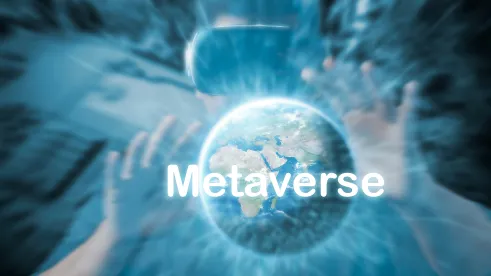The interactive tools that the metaverse offers are a perfect complement to a crucial component of the sports industry: fan engagement. And with an influx of industry players establishing a presence in the metaverse, the way we consume sports may transform sooner than we think. As stakeholders quickly realize the benefits of this “next generation internet,” it is important to properly evaluate the industry-specific risks presented by the metaverse. Following are some key considerations from both a metaverse perspective and a physical world perspective.
A Quick Look into the Intersection of Sports and the Metaverse
The metaverse is a computer-generated, persistent, immersive environment that may include elements of augmented reality and virtual reality. The user, depicted as an avatar, can interact with others, consume goods, and travel just like in the physical world, which in turn allows for engagement opportunities that have not been previously possible.
In the sports world, the breakdown of geographical and physical barriers afforded in the metaverse provides all fans with the ability to enjoy the attributes of attending a live sporting event, but in the comfort of their home or other locations. Viewing in the metaverse comes with certain benefits, such as the ability to walk on the field alongside players and watch the sporting event from different areas of the venue. Because of the opportunity for brands, leagues, teams, and players to reach and interact with fans at unprecedented levels, the metaverse will likely continue to be one of the key ways in which viewers consume sports. The concept is quickly becoming a reality as we continue to see an influx of market players establishing a presence in the metaverse – activity in recent weeks includes the English Premier League reportedly filing for NFT and metaverse trademarks, the Atlanta Braves launching Digital Truist Park, which is the first Major League Baseball park in the metaverse, and Kevin Durant reportedly filing for 26 NFT and metaverse applications.
Key Considerations
As with every new frontier, technological or otherwise, the metaverse poses legal and regulatory hurdles. The following considerations should be evaluated by sports stakeholders that are considering a metaverse presence:
-
How does the metaverse affect the scope of existing license agreements? Should license agreements include carveouts for the metaverse or other digital-only uses moving forward?
-
What challenges come with purchasing and developing real estate in the metaverse?
-
How does the metaverse impact the scope of existing broadcasting and territorial rights?
-
Will playback technology offered to fans be available to leagues if there is a challenge on a play?
-
Should policies that address the recognition of different digital assets be put in place?
-
How will digital assets be managed?
-
Should teams register copyrights in their avatars? What rights would the player have in an avatar that depicts him or her in real-time? What happens if the player registers a trademark first? Could we anticipate the foregoing to be addressed in collective bargain agreements?
-
Will employment be offered in the metaverse (for vendors, staff, etc.)?
-
How should data rights be addressed?
-
What are the general tax implications?
-
What disclosures should be made (from both a corporate and regulatory perspective)?
-
What kind of privacy, cybersecurity, and access protections should be implemented?







 />i
/>i

